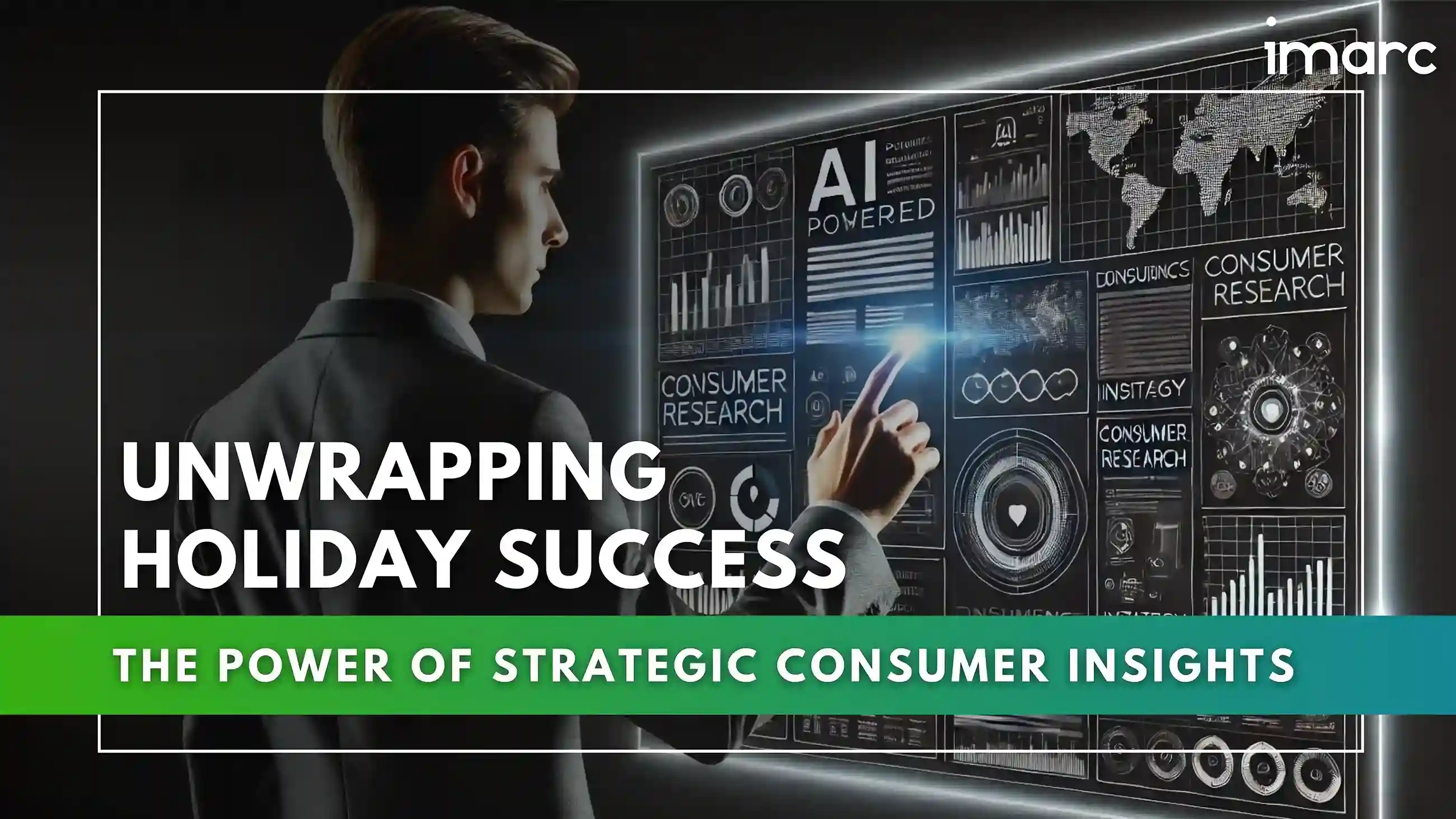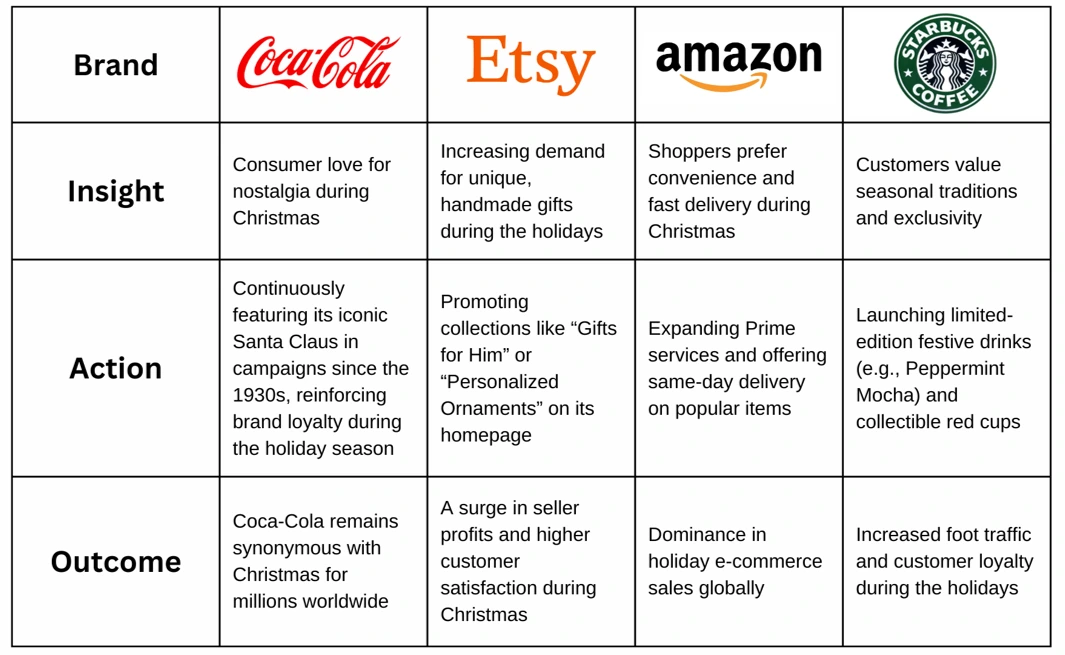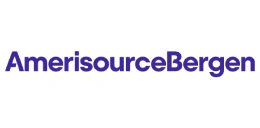Unwrapping Holiday Success: The Power of Strategic Consumer Insights

Many have encountered this scenario: visiting a website with enthusiasm to purchase a product seen in an advertisement, only to face challenges such as navigating a complex interface, unresponsive customer service, and a cumbersome checkout process.
Now, consider an alternative experience:
- The website loads instantly.
- A chatbot efficiently assists you in finding the desired product.
- A one-click checkout option ensures a seamless transaction.
- A personalized thank-you email with a discount code for the next purchase follows.
This illustrates the empathy gap—the misalignment between what companies believe they deliver and what customers eventually experience. Research shows that over 80% of companies do not use customer insights strategically, leading to products that fail to meet demand, ineffective marketing campaigns, and overlooked customer needs.
The path forward involves embracing consumer centricity and integrating customer insights into strategic business decisions.
Barriers to Effective Implementation of Consumer Insights:
- Reliance on Outdated Systems: Using outdated processes and systems can be complex and expensive, often preventing businesses from listening to their users. Businesses are required to harness the digital age's innovative tools, including live webcam interviews and asynchronous surveys, to reach a wider audience worldwide.
- Assuming Consumer Data Alone is Enough: Data collection is only half the battle. If data cannot be scrutinized and used appropriately, then it is worthless. The increased amount of spending on consumer insights and research does not guarantee the ability of organizations to use them strategically or shift to a consumer-centric approach. What is important is having the relevant channels and capabilities to understand the data and convert consumer insights into actionable strategies. This is where advanced analytics tools and platforms play a crucial role. As per IMARC projections, the global customer journey analytics market size is estimated to reach USD 52.2 Billion by 2033, exhibiting a growth rate (CAGR) of 14.8% from 2025-2033.
- Organizational Silos: Operating in silos often leads to fragmented strategies because no one has a clear picture of the consumer’s needs and preferences. Consumer insights should be the mainstay of all business decisions across all business groups. When insights are shared and leveraged across all teams, every decision, whether a product development or a marketing one, is built based on a complete and accurate understanding of customers.
Integrating Consumer Insights into Business Strategies:
Developing a Consumer-Oriented Culture
Encourage a customer-first perspective across the organization by defining what "customer-centric" means for your business and underlining how that is achieved through the consumer's input. For instance, Amazon’s mission is to be “Earth’s most customer-centric company.” This intention is evident in how they implement customer feedback to drive decisions, from Alexa features to Prime benefits. The company urges all employees, including senior executives, to listen to customer calls and reviews.
Evaluate Impact by Setting Consumer-Specific Goals
Customer insights should define achievable, significant goals; not "we want happier customers", but rather "increase customer satisfaction by 15% this quarter" or "reduce customer churn rates by 15%." Clear and ambitious targets keep everyone on the same page.
Adopting Tools to Make Consumer Insights More Accessible to Everyone
- Unified Platform: Using a one-stop data hub or all-in-one platform makes your research simple as it enables anyone, not just experienced researchers, to easily connect with customers through live interviews, asynchronous studies, and other channels.
- Generative AI: With piles of interview transcripts, analysis of insights, particularly qualitative insights, can be a chore. AI-powered tools help streamline the workflow by analyzing customer feedback with ease and identifying key themes, emerging trends, and pain points instantly. For instance, Unilever deploys AI for analyzing enormous amounts of qualitative feedback. AI tools help identify trends in consumer preferences and strategize product innovation for the company.
- Centralized Global Research Hub: Implement a global research hub for all customer feedback. With this, every organization member can access real-time insights across the board- from sales and marketing to decision-making. For instance, P&G’s global research hub centralizes consumer insights, assisting R&D and marketing teams to access real-time data and innovate products such as Tide and Pampers.
- Data Visualization Tools: Make engaging insights with data visualization tools such as heat maps, sentiment analysis charts, or affinity diagrams while creating an emotional hook for the stakeholders to connect consumer data and experience fair decision-making based on what your consumers genuinely need. For instance, Spotify’s Wrapped data visualization tool not only engages users but also provides internal teams with listening behavior and trends to drive marketing strategies.
Adopt an Agile Approach to Consumer Insights
Feedback is important to keep up with the changing times. Build continuous loops for feedback through the voice of consumers concerning any strategy or project. Obtain consumer data through regular analysis, whether quantitative or qualitative studies, which will feed real-time insights about emerging trends and issues.
Real-world Instances – A Christmas Day Perspective:
.webp)
Christmas shopping often involves a surge in spending, gifting, and holiday-specific activities. Consumer insights help businesses identify:
- Purchasing Patterns: Amazon, for instance, has consistently identified trends in early holiday shopping, prompting the introduction of “Early Black Friday Deals” to capture market share.
- Gifting Preferences: Companies like Etsy track trending gift categories (e.g., handmade or personalized items) to ensure sellers highlight popular products.
- Regional Variations: Coca-Cola adapts its holiday campaigns to reflect cultural nuances, such as its Santa Claus-themed advertisements in Western markets and family-oriented messaging in Asia.
These insights guide stakeholders in making strategic, customer-focused decisions.
Key Strategic Decision Areas for Stakeholders:
Inventory Management: Accurate demand forecasting based on insights ensures proper stock levels:
- Walmart uses advanced analytics to predict product demand, ensuring its stores are stocked with top holiday items like toys, electronics, and decor.
- Target leverages real-time data to restock popular items during the peak shopping season, such as holiday-themed snacks or exclusive toy collections.
Marketing and Advertising Campaigns: Insights into consumer behavior shape effective campaigns:
- John Lewis & Partners (UK) uses emotional storytelling in their iconic Christmas ads, often based on insights into consumer sentiment.
- Starbucks designs its holiday marketing around its red cups and festive drinks, driven by social media trends highlighting consumer excitement about holiday-themed offerings.
Pricing Strategies: Dynamic pricing strategies informed by data drive profitability:
- Macy’s tracks consumer purchasing habits to plan tiered discounts, offering early deals to attract customers before Christmas while keeping premium pricing for last-minute shoppers.
- Amazon implements real-time price adjustments during its holiday season sales based on consumer demand and competitor pricing.
Customer Experience: Improving customer journeys during the busy Christmas period is key:
- Apple optimizes its delivery timelines and enhances in-store pickup options based on feedback and demand patterns.
- Zappos, renowned for its customer service, scales up its call center support during the holidays to handle increased queries and ensure customer satisfaction.
Tools and Techniques for Gathering Consumer Insights:
- Surveys and Feedback: Companies like Netflix and Spotify conduct year-end surveys to understand what users loved during the holiday season, enabling better recommendations and offerings.
- Social Media Listening: Nike monitors social media to identify trending holiday gift ideas, such as specific shoe models, allowing it to amplify campaigns for those products.
- Sales Data Analysis: Best Buy reviews past Christmas sales to decide on product bundling strategies, such as pairing popular electronics like TVs with discounted sound systems.
- AI and Predictive Analytics: UPS uses AI to optimize delivery routes during the holiday season, addressing increased e-commerce orders and ensuring timely deliveries.
- The Role of Collaboration: Effective use of consumer insights requires collaboration among teams:
- Marketing teams at companies like John Lewis work closely with creative agencies to craft heartwarming Christmas campaigns.
- Logistics departments at Amazon and UPS ensure smooth operations based on predicted shipping surges during the holidays.
Success Stories:
- Coca-Cola:
- Insight: Consumer love for nostalgia during Christmas
- Action: Continuously featuring its iconic Santa Claus in campaigns since the 1930s, reinforcing brand loyalty during the holiday season
- Outcome: Coca-Cola remains synonymous with Christmas for millions worldwide
- Etsy:
- Insight: Increasing demand for unique, handmade gifts during the holidays
- Action: Promoting collections like “Gifts for Him” or “Personalized Ornaments” on its homepage
- Outcome: A surge in seller profits and higher customer satisfaction during Christmas
- Amazon:
- Insight: Shoppers prefer convenience and fast delivery during Christmas
- Action: Expanding Prime services and offering same-day delivery on popular items
- Outcome: Dominance in holiday e-commerce sales globally
- Starbucks:
- Insight: Customers value seasonal traditions and exclusivity
- Action: Launching limited-edition festive drinks (e.g., Peppermint Mocha) and collectible red cups
- Outcome: Increased foot traffic and customer loyalty during the holidays

Wrapping Up:
In conclusion, leveraging consumer insights strategically is no longer a luxury; it is essential for creating memorable and seamless customer experiences, especially during the holiday season when expectations and competition are at their peak. Businesses that effectively gather, analyze, and act on customer data can transform challenges into opportunities, ensuring a hassle-free journey from product discovery to post-purchase engagement. By embracing innovative tools, fostering a customer-centric culture, and breaking down organizational silos, companies can create personalized experiences that resonate with customers and drive loyalty. As the holiday season continues to evolve, the companies that put customer insights as the mainstay of their strategies will not only stand out but also build lasting connections with their audience. Ultimately, the businesses that thrive will be the ones that continuously listen, adapt, and deliver exactly what their customers need.
Empowering Your Business with Data-Driven Strategies:
We at IMARC devise the necessary services for businesses to meet their required and critical consumer insights in today's fast-paced, highly competitive world. Whether optimizing your marketing strategies for the holiday season, creating unique customer experiences, or improving your product offerings, IMARC has complete research services to cater to your needs. Our expertise spans across marketing and sales services, in-depth interviews, focus group discussions, and more, ensuring we cover all aspects of consumer behavior and market trends.
Our highly trained analysts develop detailed reports, highlighting major market trends, consumer behavior patterns, and future possibilities for data-driven decision-making. From cutting-edge tools like AI-enabled analysis and real-time data collection to understanding behavioral shifts in emerging regions, IMARC helps you use data with smart action plans. We integrate customer insights into business processes to ensure that you are always in the lead, meet customer expectations, and develop new avenues for growth.
Our Clients
Contact Us
Have a question or need assistance?
Please complete the form with your inquiry or reach out to us at
Phone Number
+91-120-433-0800+1-201-971-6302
+44-753-714-6104










